This Homemade Balsamic Glaze (Balsamic Reduction) is a great condiment to have on hand. In just 15 minutes, using two simple ingredients, you can make this syrupy glaze with complex sweet and tangy flavours. You will find many ways in which to use it; it can turn a simple dish into something special with its perfectly balanced, intense flavour and rich colour.
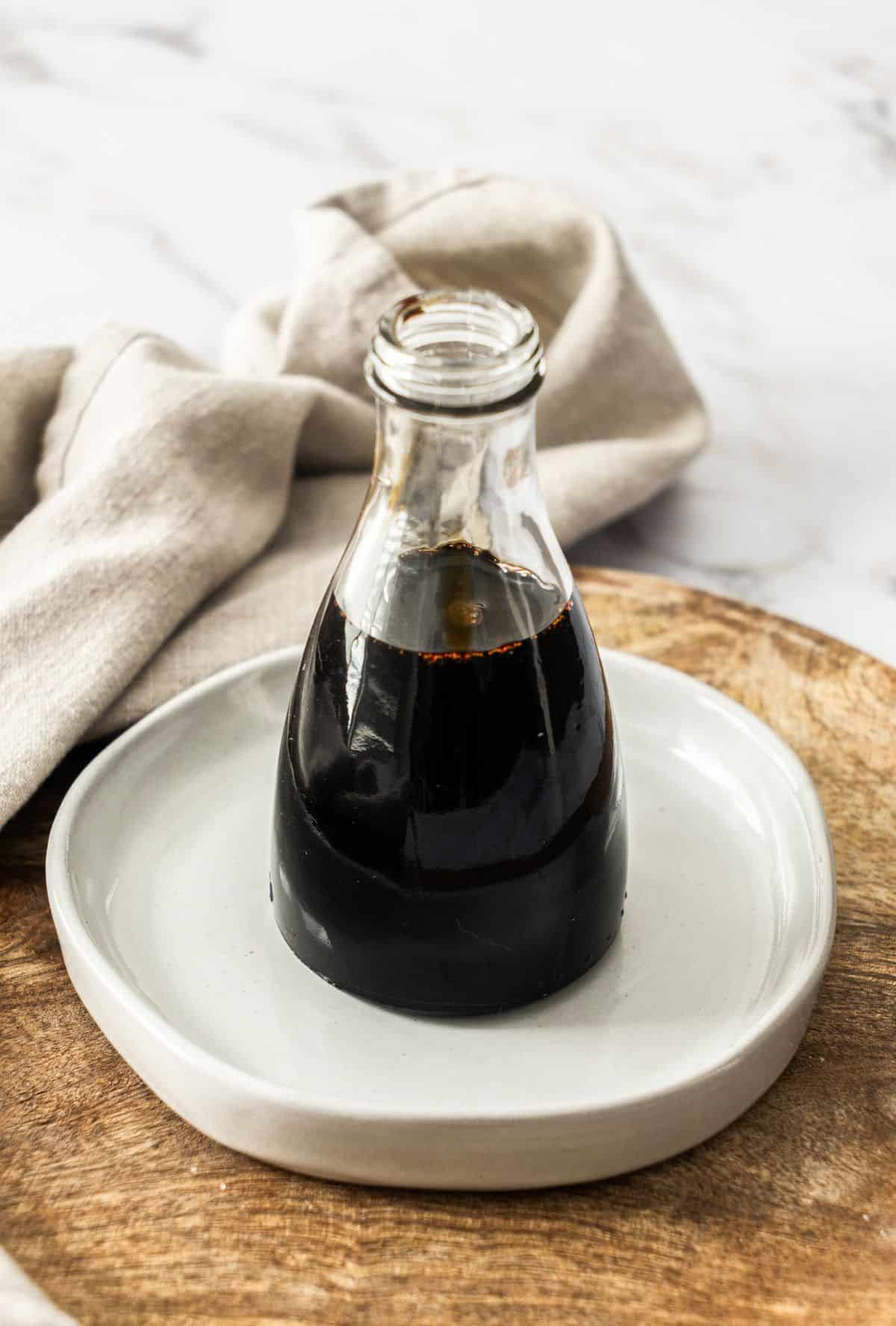
Why you’ll love this recipe:
With many food items, those we make ourselves are generally superior to the commercial equivalent. One of the most important reasons for making your own produce is that you control the quality of the ingredients.
To make Balsamic Glaze, we use a combination of inexpensive Balsamic Vinegar (Aceto Balsamico di Modena) and brown sugar. It doesn’t come simpler or easier than that. Many commercial varieties of Balsamic Glaze have unnecessary thickeners and artificial colours.
You will love this Homemade Balsamic Glaze because:
- Balsamic Glaze, also known as Balsamic Reduction, is made from two simple ingredients that are readily available in the supermarket.
- If you want a larger quantity, you can easily double the ingredients, but it will take longer to reduce.
- It is economical as you don’t need to buy expensive balsamic vinegar. Choose a moderately priced one. I prefer to use one that is not artificially coloured.
- Reducing inexpensive balsamic vinegar with some brown sugar is an easy method that produces a slightly sticky, syrupy glaze that has complex sweet, yet tangy flavours and has a myriad of uses.
- Traditionally, balsamic vinegar is gluten-free and vegan. However, it is best to always check labels.
- You will find many ways in which to use the Balsamic Glaze. Enjoy it with meat, poultry, fish, vegetables, or salads. As well as savoury uses, many people enjoy it with strawberries or drizzled over ice cream.
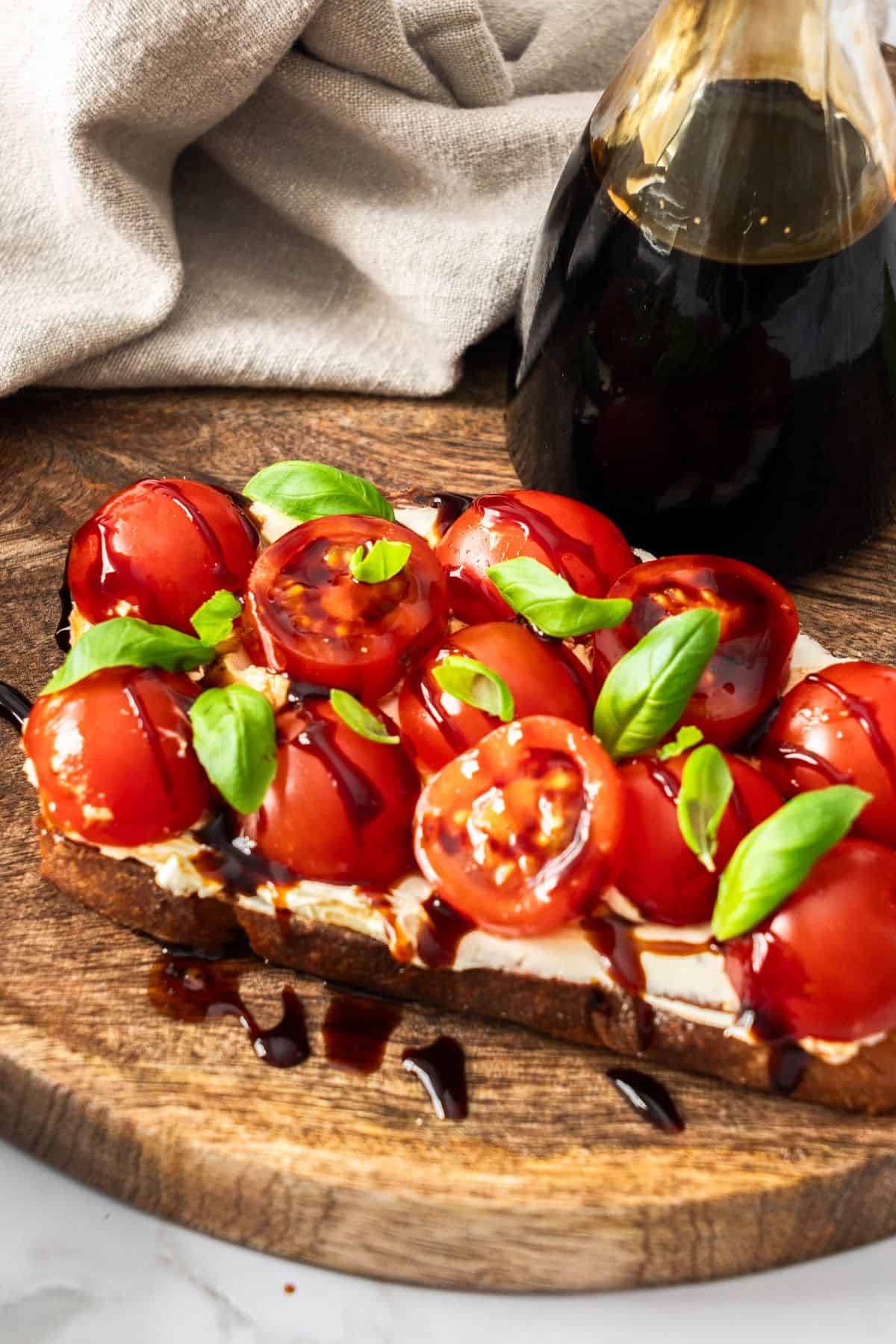
Ingredients in this recipe:
Please see the recipe card further along in the post for exact quantities of ingredients and the full method.
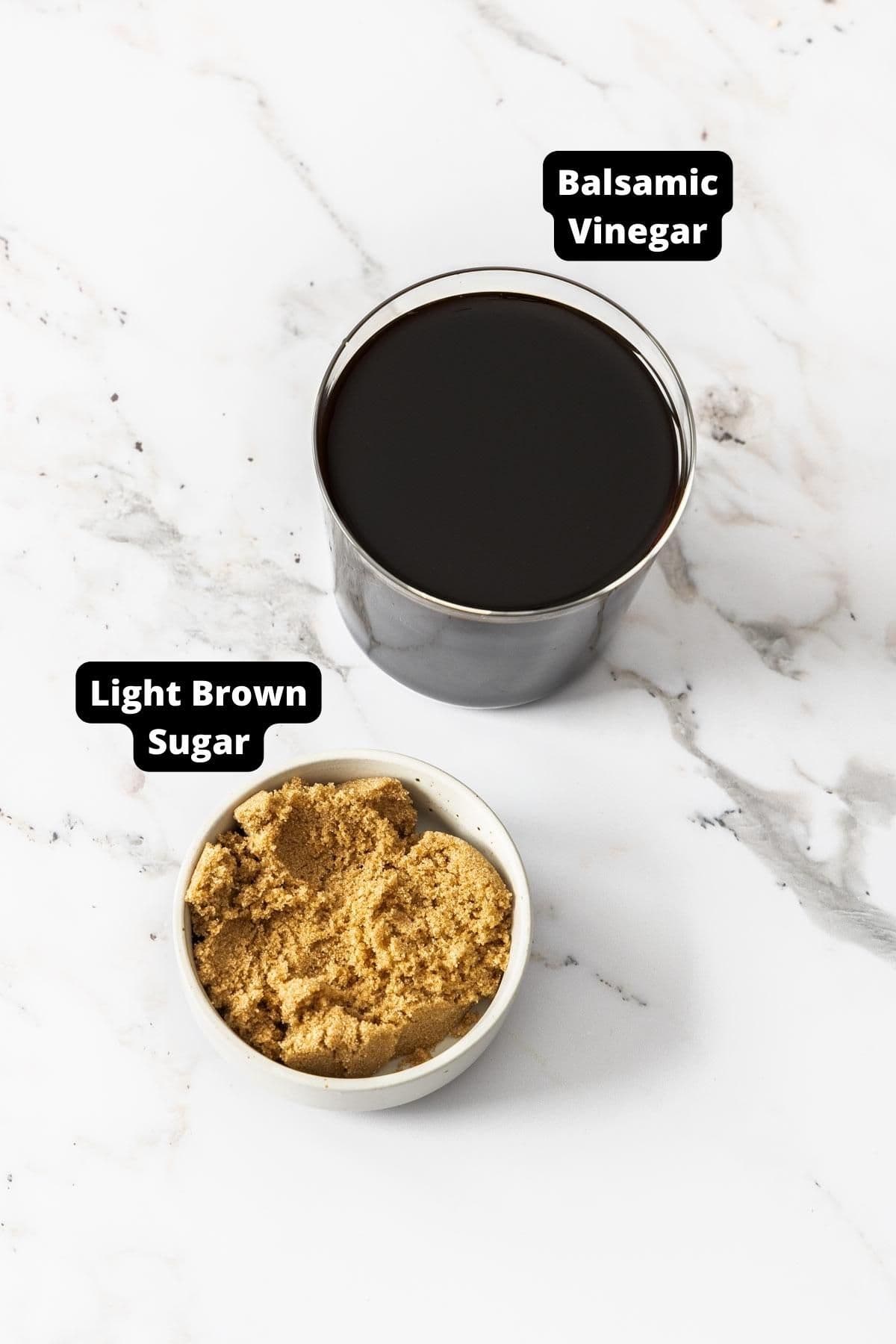
Balsamic vinegar – (Aceto Balsamico di Modena) is a dark, concentrated vinegar which originated in Modena, in the Emilia-Romagna region of Northern Italy. It is not necessary to buy an expensive variety. Choose one which is moderately priced as the addition of sugar helps balance the acidity of the concentrated vinegar.
Brown sugar – balances the acidity and adds gentle caramel sweetness. We use light brown sugar.
How To Make Homemade Balsamic Glaze:
Please see the recipe card further along in the post for exact quantities of ingredients and the full method.
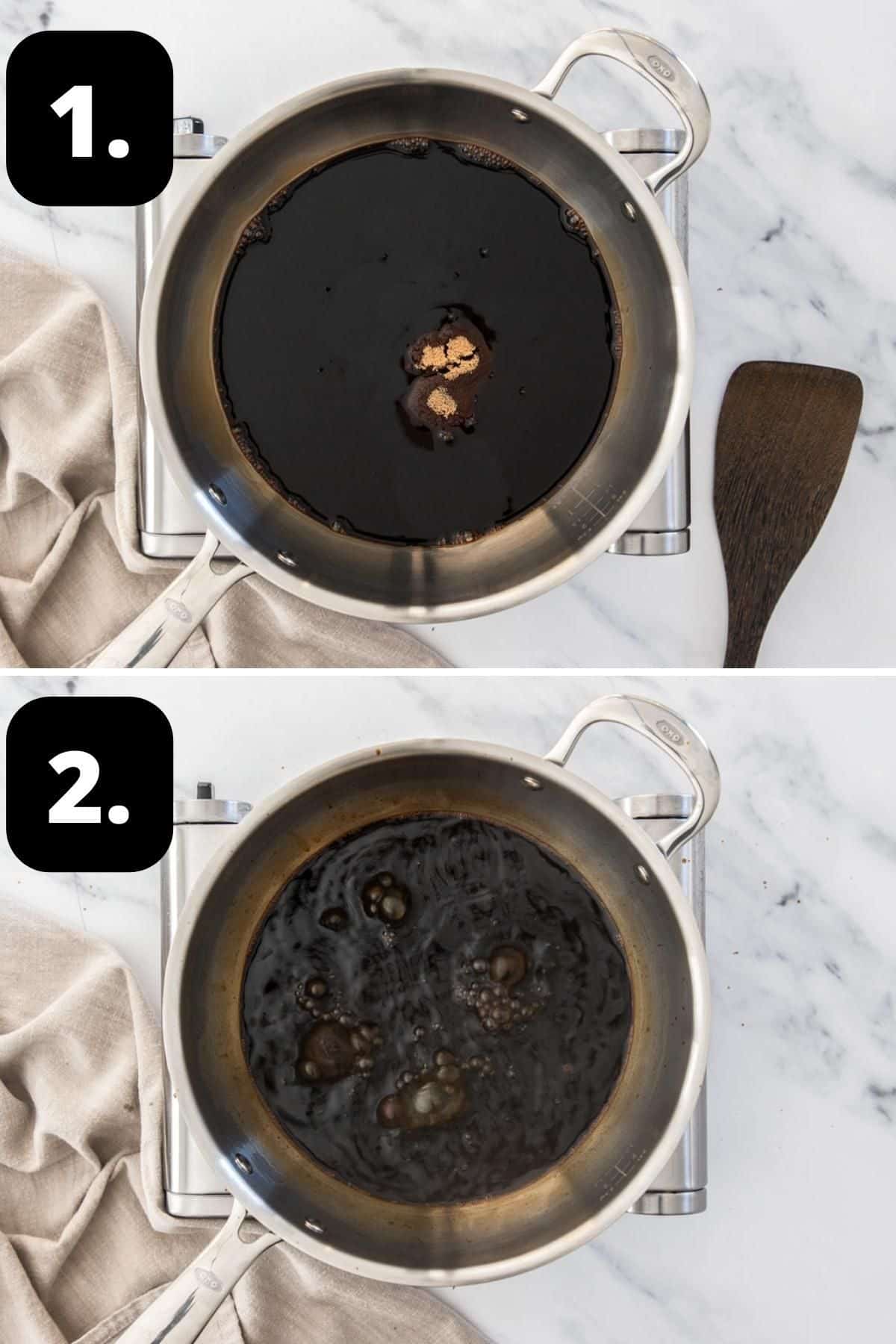
1 – Add the Balsamic Vinegar and Brown Sugar to a pan:
Combine balsamic vinegar and brown sugar in a small saucepan.
Cook, stirring occasionally, over low heat for about 4 minutes or until the sugar has dissolved.
2 – Bring to a boil:
Bring the mixture to a boil, reduce the heat to medium, and simmer for 15 – 17 minutes or until reduced by about half.
When ready, the mixture will be slightly syrupy and will lightly coat the back of a spoon. The glaze will thicken as it cools. Cool, put into a sterilised bottle or airtight jar and keep in the fridge for up to one month.
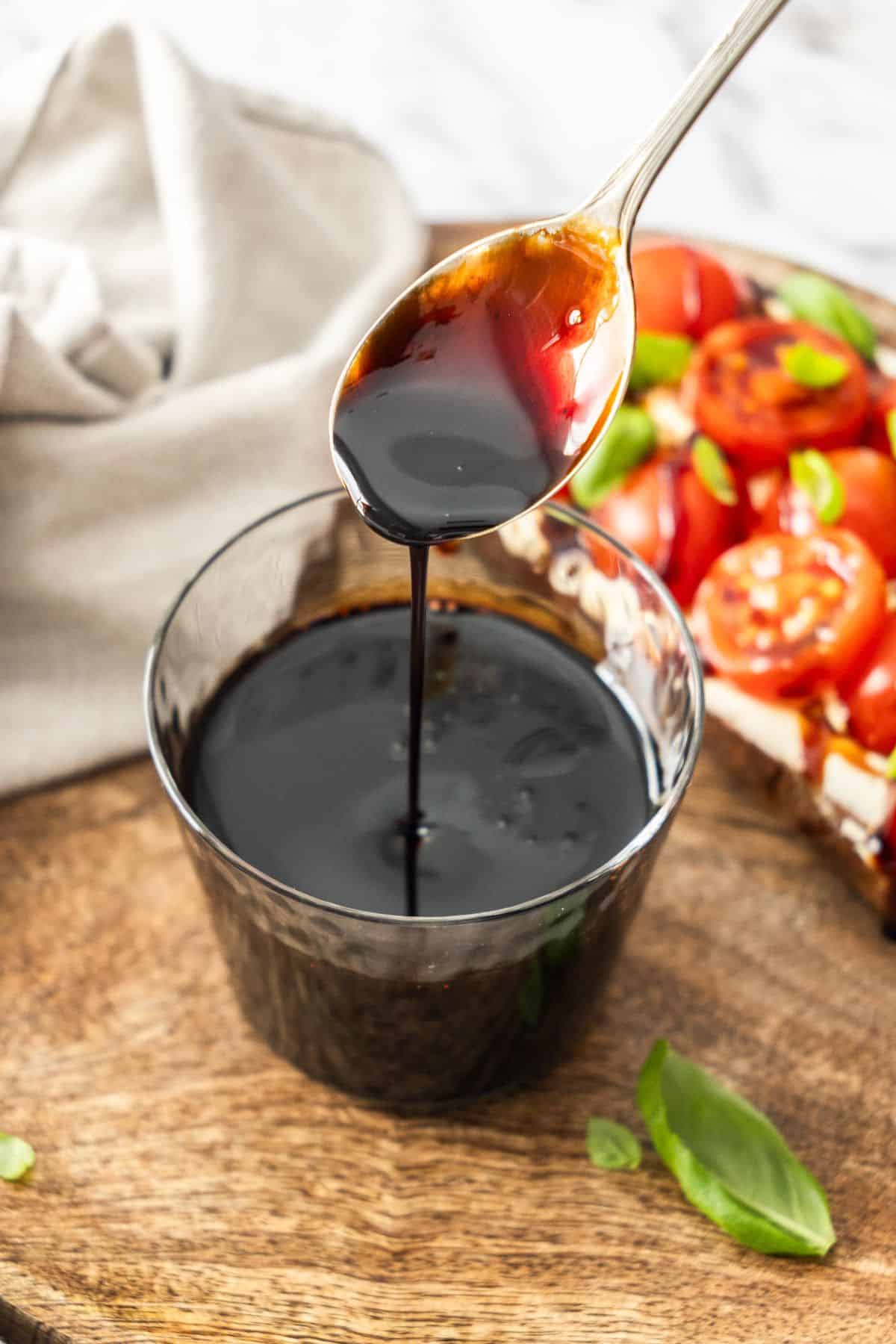
Tips for success and FAQs:
One of the most important tips I can give you is to use your exhaust fan and possibly open a window, as the warm vinegar fumes are powerful.
If stored properly, you can keep it for up to one month.
Store the Balsamic Glaze in a sterilised, airtight bottle or jar in the fridge.
You need to use a non-reactive saucepan. Non-reactive saucepans are those which are made from stainless steel, glass, ceramic or enamelled cookware. Aluminium, copper and iron pans are reactive. Acidic foods, such as vinegar, may discolour and take on a metallic taste if cooked in these pans.
Simmer to a light syrupy consistency until the glaze lightly coats the back of a spoon. The glaze should still be pourable as it will thicken as it cools. It is better to under-reduce the liquid than to over-reduce it. If, when the liquid has cooled, it is not as thick as you would like, you can return to the saucepan and simmer a little longer.
If it is not solid and is not burnt, return the glaze to the saucepan, and add a small amount of water. Gently warm, to thin the mixture.
Sterilising your jar or bottle:
Sterilise the jar or bottle you’ll be using to store the Homemade Balsamic Glaze.
Wash the jar or bottle in hot soapy water, then rinse well.
Preheat your oven to 130 Degrees C (270 F) and place the jar or bottle in the oven for 15-20 minutes. Allow the lids to air dry.
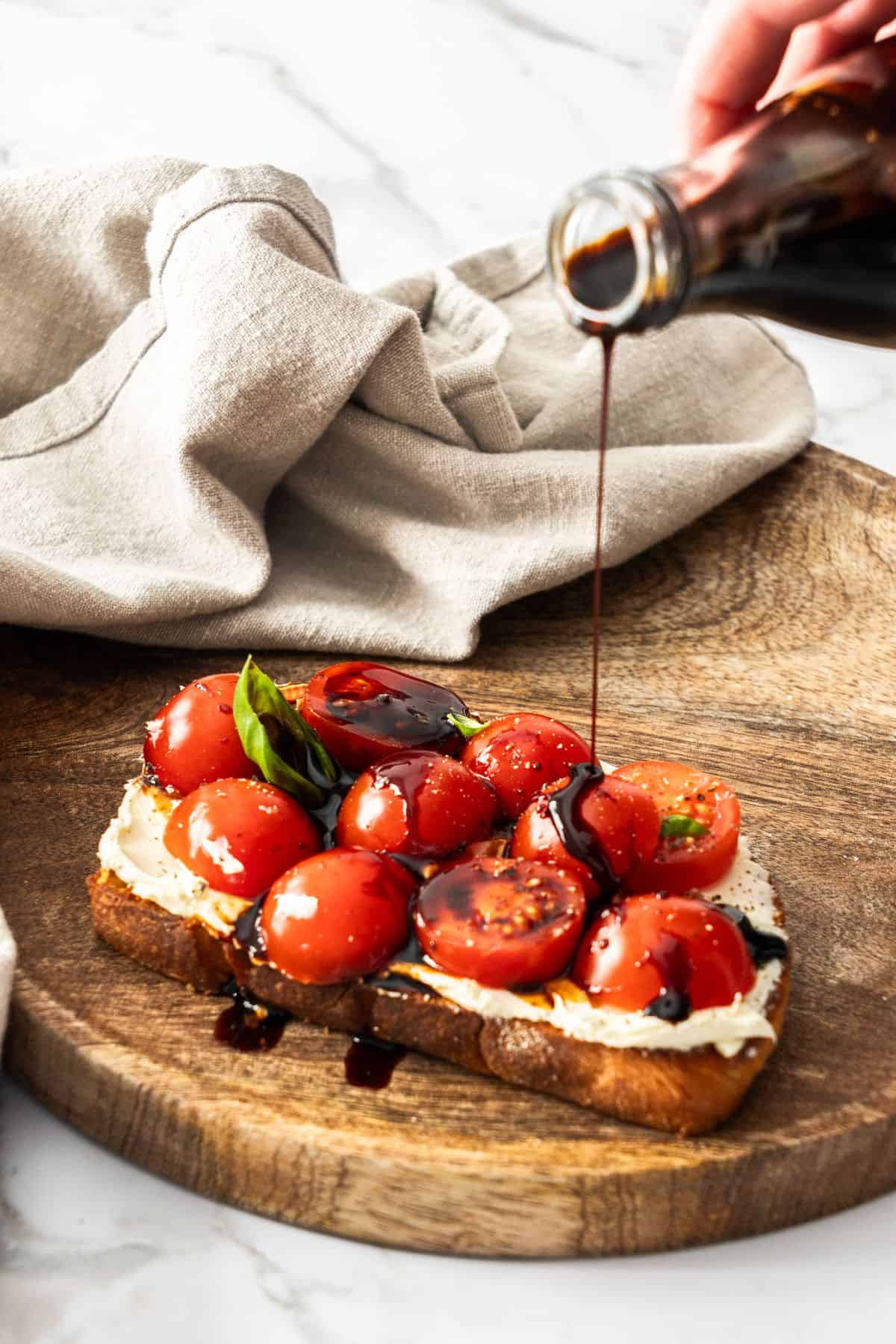
Serving suggestions:
Once you start adding this glaze to dishes, you will be won over by the myriad of ways in which to use it.
As it is concentrated, a drizzle is generally all that you will require. Some of the ways that I like to use it are:
- Drizzled over my Roasted Onions with Thyme.
- On salads, such as my Roasted Cherry Tomato Caprese Salad.
- Over a hard cheese, such as Parmigiano Reggiano.
- Alongside fish, poultry or roasted vegetables.
- Drizzled over strawberries or Vanilla Ice Cream.
With its beautiful, rich colour and perfectly balanced, intense flavour, Balsamic Glaze can turn a simple dish into something special. There are so many ways to use it that you are only limited by your imagination, and it is so easy to make that it is worth always having some on hand.
Alex xx
More delicious recipes for you to try:
Stay in touch!
Follow me on Facebook, Pinterest and Instagram and subscribe to my newsletter.
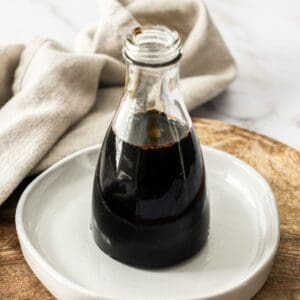
Homemade Balsamic Glaze (Balsamic Reduction)
Please note:
For accuracy, when weights are provided, we recommend weighing your ingredients. This will produce the best results. All oven temperatures listed are for fan forced.
Ingredients
- 1 ½ cups (375 ml) balsamic vinegar
- 3 tablespoon light brown sugar See Note 1
Instructions
For the Jar/Bottle:
- Sterilise the jar or bottle you'll be using to store the Homemade Balsamic Glaze.Choose a glass jar/bottle with an airtight lid and ensure they have been washed by hand in hot soapy water then rinsed well.Preheat your oven to 130 Degrees C (270 F) and place the jar/bottle in the oven for 15-20 minutes. Allow the lid to air dry.
For the Homemade Balsamic Glaze:
- Combine the balsamic vinegar and brown sugar in a small non-reactive saucepan. (See Note 2.)Cook, stirring occasionally, over low heat for about 4 minutes or until the sugar has dissolved.
- Bring the mixture to a boil, reduce the heat to medium, and simmer for 15 – 17 minutes or until reduced by about half. Remove from the heat and allow the glaze to cool.The time it takes to reduce will depend on the surface area of your saucepan and the amount of heat applied.
- It is best to not over-reduce your balsamic glaze. It will continue to thicken as it cools. When yours has cooled, if it is not as thick as you would like, you can always put it back on the stove for a short time.If you have over-reduced it, add a small amount of water and warm through to thin it slightly.Pour the cooled glaze into a sterilised jar or bottle and store in the fridge for up to one month.
Notes
- Tablespoon: we use a standard Australian tablespoon which is 20 ml (4 teaspoons).
- Non-reactive saucepans: are those which are ceramic, stainless steel, glass or enamelled cookware. Copper, iron and aluminium pans are reactive. Acidic foods, such as vinegar, may take on a metallic taste and discolour if cooked in such pans.
- Storage: store in the fridge in the sterilised jar or bottle for up to a month.
- Nutritional information: is estimated based on the entire jar.
Nutrition Estimate:
Nutritional Disclaimer:
The nutritional information is an estimate only, and is derived from online calculators. For accurate results, we recommend calculating the nutritional information based on the ingredients and brands you use.
This post was originally published in October 2018. It has been updated with more information and new photos. Small improvements have been made to the recipe.

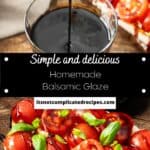
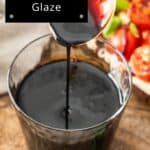

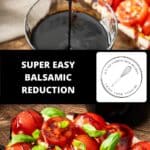
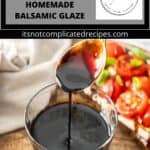
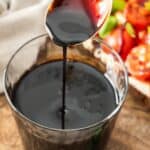




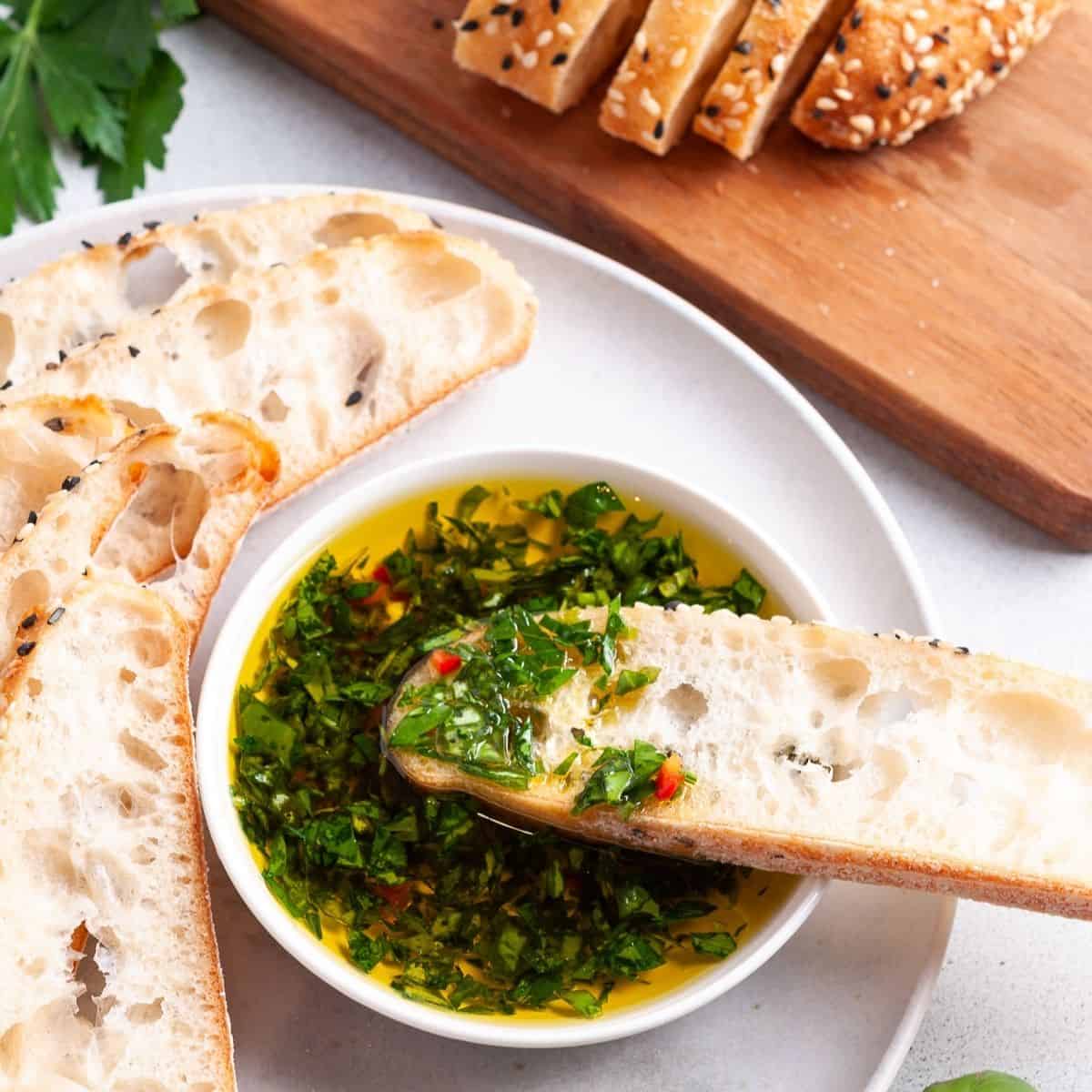
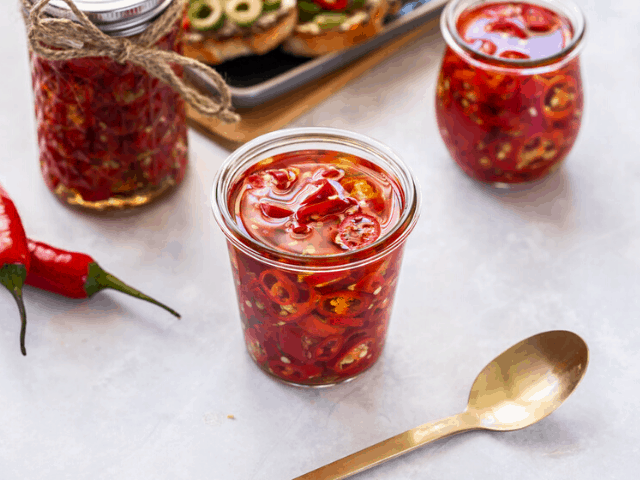

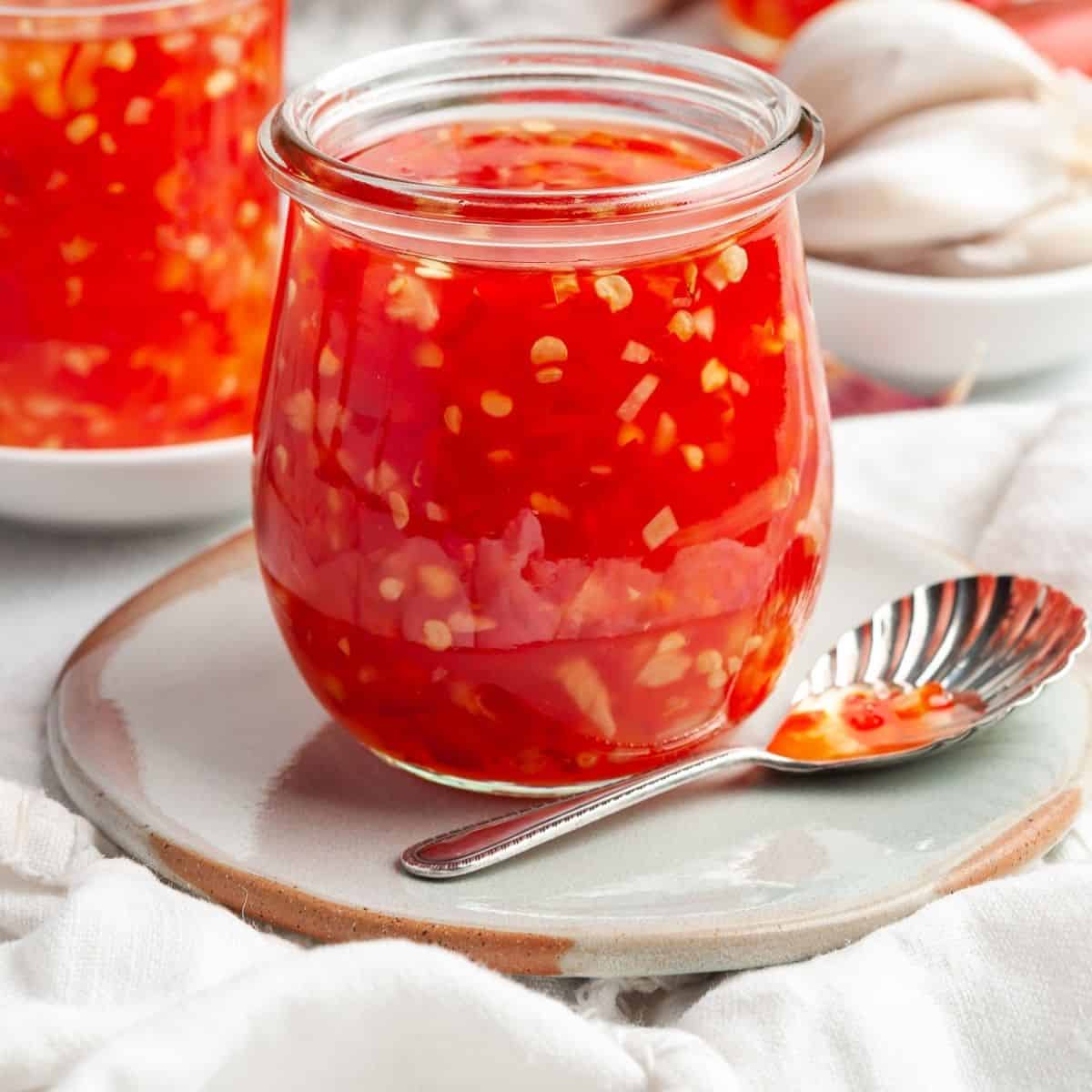
Danielle
Super easy, and SOOO delicious! I drizzled it over cottage cheese with sliced tomatoes, salt and pepper.
Alexandra Cook
Thank you, Danielle! 🙂 so happy you enjoyed this recipe!
Alex xo
Alicia
That sounds amazing! I’m going to try that, and maybe add some fresh basil or pesto to it. Yum!
Fast Eddie
Good stuff. Use it on roasted broccoli.
Alexandra Cook
That sounds like a delicious way to enjoy it! 🙂
Marie
I can’t believe how simple this is to make at home and it tastes fantastic. Thanks for another great recipe.
Alexandra Cook
Thank you so much, Marie – it is so lovely to make this at home, isn’t it?
We love an easy and delicious recipe like this one. Alex xo
Judith
Would this be good as a drizzle over a caprese salad?
Alexandra Cook
Hi Judith!
That’s one of our favourite ways to enjoy it 🙂
David Elliott
I love a good balsamic glaze and never knew it was this simple to make.
Alexandra
That is great, David!
Kisha
Who in the world would have ever known that something so delicious could be this easy. Gave this a try yesterday and what do you know– it was perfect! Drizzled over pizza yesterday and today I drizzled it over salmon. Both times it was awesome.
Alexandra
Thank you for the lovely comments Kisha, I’m so glad that you enjoyed it. 🙂
Nina
this is such an easy recipe to follow! thank you for sharing
Alexandra
Hi Nina, I’m glad that you like the recipe, thank you. 🙂
Julie Verville
I love how simple this is to make!
Alexandra
Thanks, Julie! We love a good simple recipe, also 🙂
Sally
This is so simple but yummy!
Alexandra
Thank you, Sally! It is both those things xx